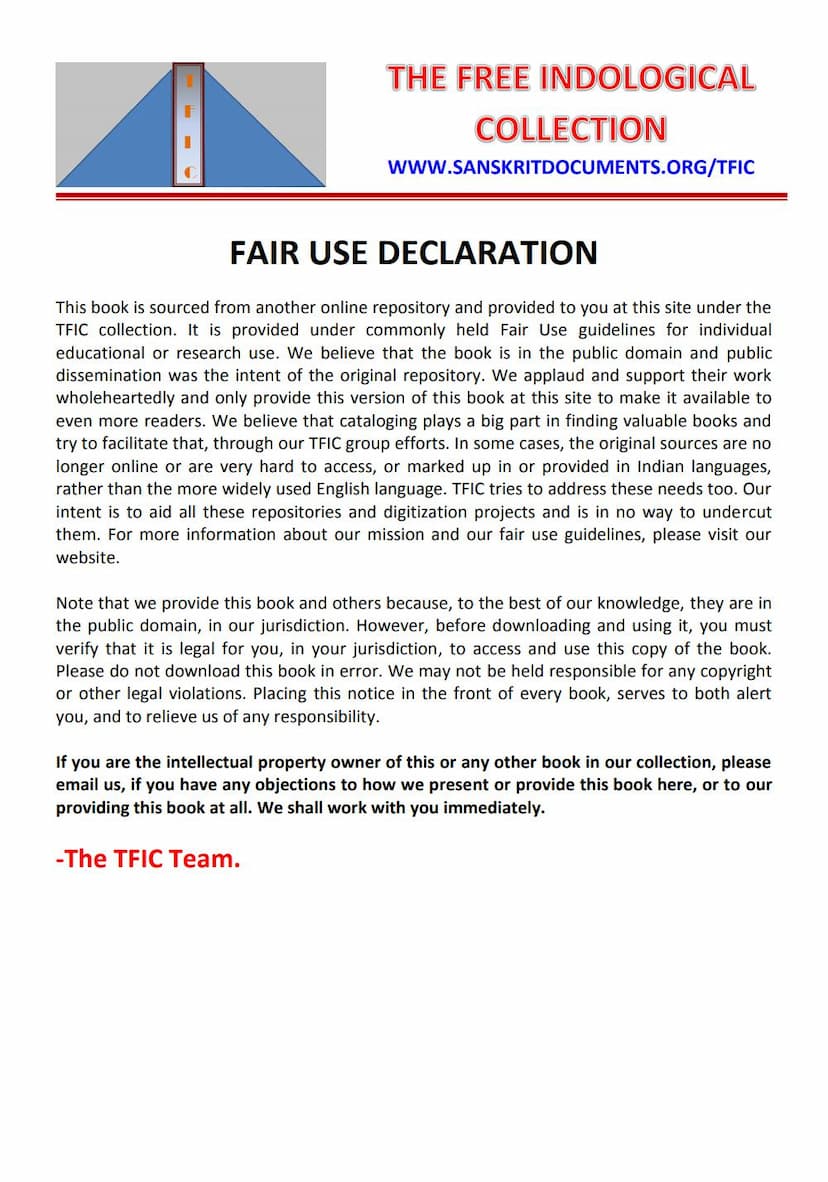Jain Jagti
Added to library: September 2, 2025

Summary
"Jain Jagti" (The Jain World), authored by Daulatsinh Lodha, published in 1966, is a comprehensive Hindi poetic work that aims to awaken the Jain community by presenting a vivid portrayal of their past glory, present decline, and a vision for the future. The book is structured into three main sections: the past, the present, and the future.
Overview of the three sections:
-
Past (अतीत खण्ड): This extensive section extols the glorious past of the Jain community. It highlights their significant contributions to Indian civilization, culture, science, art, trade, and spirituality. The author paints a picture of a prosperous, virtuous, and influential Jain society that played a pivotal role in shaping India's heritage. It details the achievements of various Jain scholars, artists, kings, and women, emphasizing their intellectual prowess, ethical conduct, and spiritual depth. The text also touches upon the vastness of Jain literature and philosophical contributions.
-
Present (वर्तमान खण्ड): This section starkly contrasts the glorious past with the perceived decline and shortcomings of the Jain community in the present day. The author critically examines various aspects of contemporary Jain society, including:
- Disunity and Division: Highlighting the internal conflicts and sectarian divisions within the Jain community.
- Moral and Spiritual Decay: Lamenting the perceived loss of adherence to Jain principles like non-violence, self-control, and truthfulness, and the rise of hypocrisy and superficial rituals.
- Economic Decline: Pointing out the stagnation and decline in trade and business practices compared to the past.
- Educational and Cultural Backwardness: Criticizing the lack of focus on genuine education and the adoption of foreign customs and fashions, leading to a loss of cultural identity.
- Social Ills: Addressing issues like extravagance, wastefulness, inappropriate relationships, the plight of the poor, and the decline in moral values among both the wealthy and the common populace.
- Abuse of Religious Positions: Criticizing the conduct of some religious leaders and the commercialization of religious practices.
- Neglect of Traditions: Expressing concern over the erosion of traditional values and practices.
-
Future (भविष्यत् खण्ड): This section serves as a call to action, urging the Jain community to learn from their past and present circumstances to build a brighter future. It offers guidance and inspiration for revival and reform:
- Unity and Revival: Emphasizing the need for unity, shedding internal differences, and working collectively for the betterment of the community and the nation.
- Rediscovering Jain Ideals: Encouraging a return to the core principles of Jainism, such as compassion, self-discipline, and intellectual pursuit.
- Emphasis on Education: Advocating for a renewed focus on education, particularly in Jain scriptures and philosophy, alongside modern sciences.
- Social Reform: Calling for the eradication of social evils and the promotion of ethical conduct in all spheres of life.
- Empowerment of Women: Recognizing the crucial role of women in shaping the future and urging their education and empowerment.
- Leadership and Responsibility: Urging the wealthy and influential members of the community to use their resources for the welfare of the community and the nation.
- Nationalism and Patriotism: Fostering a sense of national pride and urging selfless service to the country.
- Spiritual Rejuvenation: Ultimately, the goal is to inspire a spiritual awakening and a commitment to the noble path of Jainism for the betterment of individuals and society as a whole.
Overall Theme:
"Jain Jagti" is a passionate and evocative plea for introspection and action within the Jain community. It serves as a mirror reflecting their proud heritage, the challenges they face, and the potential for a resurgence through adherence to their foundational principles and collective effort. The author uses poetic language and historical references to inspire a sense of urgency and hope, urging the community to reclaim its lost glory and contribute positively to the world.